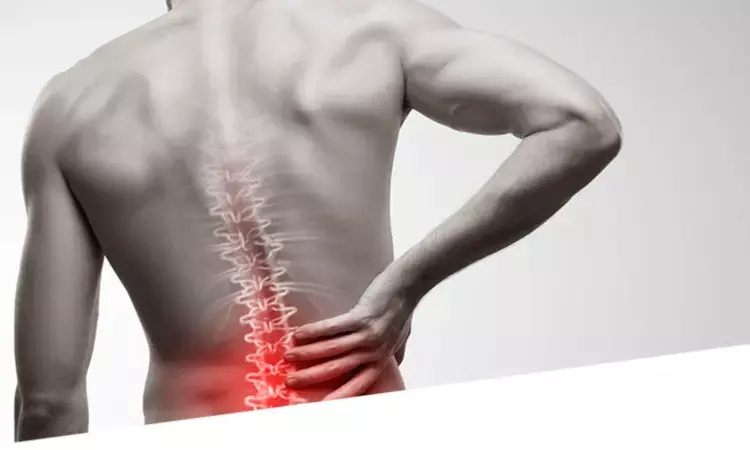- Home
- Medical news & Guidelines
- Anesthesiology
- Cardiology and CTVS
- Critical Care
- Dentistry
- Dermatology
- Diabetes and Endocrinology
- ENT
- Gastroenterology
- Medicine
- Nephrology
- Neurology
- Obstretics-Gynaecology
- Oncology
- Ophthalmology
- Orthopaedics
- Pediatrics-Neonatology
- Psychiatry
- Pulmonology
- Radiology
- Surgery
- Urology
- Laboratory Medicine
- Diet
- Nursing
- Paramedical
- Physiotherapy
- Health news
- Fact Check
- Bone Health Fact Check
- Brain Health Fact Check
- Cancer Related Fact Check
- Child Care Fact Check
- Dental and oral health fact check
- Diabetes and metabolic health fact check
- Diet and Nutrition Fact Check
- Eye and ENT Care Fact Check
- Fitness fact check
- Gut health fact check
- Heart health fact check
- Kidney health fact check
- Medical education fact check
- Men's health fact check
- Respiratory fact check
- Skin and hair care fact check
- Vaccine and Immunization fact check
- Women's health fact check
- AYUSH
- State News
- Andaman and Nicobar Islands
- Andhra Pradesh
- Arunachal Pradesh
- Assam
- Bihar
- Chandigarh
- Chattisgarh
- Dadra and Nagar Haveli
- Daman and Diu
- Delhi
- Goa
- Gujarat
- Haryana
- Himachal Pradesh
- Jammu & Kashmir
- Jharkhand
- Karnataka
- Kerala
- Ladakh
- Lakshadweep
- Madhya Pradesh
- Maharashtra
- Manipur
- Meghalaya
- Mizoram
- Nagaland
- Odisha
- Puducherry
- Punjab
- Rajasthan
- Sikkim
- Tamil Nadu
- Telangana
- Tripura
- Uttar Pradesh
- Uttrakhand
- West Bengal
- Medical Education
- Industry
JAMA study describes two conservative interventions that effectively treat acute and subacute spine pain

USA: A multidisciplinary biopsychosocial intervention or an individualized postural therapy (IPT) intervention for 6-8 weeks compared to usual care was linked to small but statistically significant reductions in pain-related disability at three months in patients with acute or subacute spine pain, show results from SPINE CARE trial.
The multidisciplinary biopsychosocial intervention known as ICE that includes physical therapy resulted in no significant difference in spine-related health care spending compared to usual care. IPT intervention led to significantly higher spine-related healthcare spending in one year. The findings of the SPINE CARE randomized controlled trial were featured in the Journal of the American Medical Association (JAMA).
Previous studies have reported that neck and low back pain are often self-limited, but healthcare spending remains high. Considering this, Niteesh K. Choudhry from the Harvard Medical School in Boston, Massachusetts, and colleagues aimed to assess the effects of 2 interventions that stress non-invasive care for spine pain. They addressed the question, "Does an individualized postural therapy or multidisciplinary biopsychosocial intervention reduce health care spending and improve disability among patients with acute or subacute spine pain?
The trial, conducted at 33 centres in the US, enrolled 2971 participants with neck or back pain for three months or less from 2017 to 2020; the final follow-up was in March 2021. Participants were randomized at the clinic level; 992 to usual care; 829 to a risk-stratified, multidisciplinary intervention (the ICE care model that combines health coach counseling, physical therapy and consultation from a pain medicine or rehabilitation specialist); and 1150 to individualized postural therapy, a postural therapy approach that combines building self-management and self-efficacy with physical therapy.
Change in ODI (Oswestry Disability Index) score at three months; it ranges from 0 being the best to 100 being the worst, and spine-related health care spending at one year was determined (primary outcomes).
The authors reported the following findings:
- Among 2971 randomized participants (mean age, 51.7 years; 60.3% were women), 92% completed the trial.
- Mean ODI scores changed from 29.3 to 15.4 for IPT, 31.2 to 15.4 for ICE, and 28.9 to 19.5 for usual care Between baseline and 3-month follow-up.
- Absolute differences compared with usual care were −4.3 for IPT and −5.8 for ICE at 3-month follow-up.
- Mean 12-month spending was $2528, $1448, and $1587 in the IPT, ICE, and usual care groups, respectively.
- Spending differences compared with usual care were $941 (risk ratio, 1.40) for IPT and −$139 (risk ratio, 0.93) for ICE.
The study revealed that both a biopsychosocial and IPT intervention resulted in a modest statistically significant decrease in disability at three months compared with usual care; however, the postural therapy intervention resulted in more lavish spending, and the biopsychosocial intervention resulted in no significant difference in spending at one year.
Reference:
Choudhry NK, Fifer S, Fontanet CP, et al. Effect of a Biopsychosocial Intervention or Postural Therapy on Disability and Health Care Spending Among Patients With Acute and Subacute Spine Pain: The SPINE CARE Randomized Clinical Trial. JAMA. 2022;328(23):2334–2344. doi:10.1001/jama.2022.22625
Dr Kamal Kant Kohli-MBBS, DTCD- a chest specialist with more than 30 years of practice and a flair for writing clinical articles, Dr Kamal Kant Kohli joined Medical Dialogues as a Chief Editor of Medical News. Besides writing articles, as an editor, he proofreads and verifies all the medical content published on Medical Dialogues including those coming from journals, studies,medical conferences,guidelines etc. Email: drkohli@medicaldialogues.in. Contact no. 011-43720751


